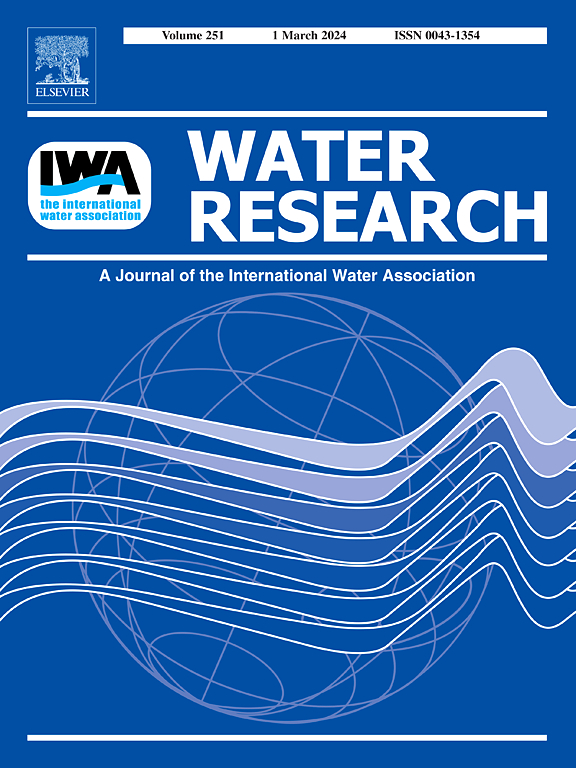Mechanisms of reactive intermediates formation in saline-alkali agricultural waters
IF 11.4
1区 环境科学与生态学
Q1 ENGINEERING, ENVIRONMENTAL
引用次数: 0
Abstract
Reactive intermediates (RIs) are critical in nutrient cycling and pollution mitigation, yet their behavior in salinized agricultural waters remains underexplored. This study investigates RIs formation in rice cultivation water from a typical saline-alkali region in China. Singlet oxygen was more pH-sensitive than hydroxyl radical (•OH), while triplet excited-state dissolved organic matter were more influenced by salinity. Steady-state •OH concentration ([•OH]ss) correlated strongly with concentrations of nitrite ([NO2--N]) and nitrate ([NO3--N]), with photolysis of NO2- and NO3-, and DOM contributing 19.50 %, 6.93 %, and 73.57 % to •OH formation, respectively. [RIs]ss positively correlated with fluorescence index and negatively with autochthonous index, indicating exogenous DOM as a major RIs source. Additionally, [•OH]ss was linked to aromatic content and DOM molecular weight, highlighting the importance of DOM structure in •OH production. These findings clarify the formation pathways of RIs in saline-alkali waters, informing ecological restoration and environmental management.


求助全文
约1分钟内获得全文
求助全文
来源期刊

Water Research
环境科学-工程:环境
CiteScore
20.80
自引率
9.40%
发文量
1307
审稿时长
38 days
期刊介绍:
Water Research, along with its open access companion journal Water Research X, serves as a platform for publishing original research papers covering various aspects of the science and technology related to the anthropogenic water cycle, water quality, and its management worldwide. The audience targeted by the journal comprises biologists, chemical engineers, chemists, civil engineers, environmental engineers, limnologists, and microbiologists. The scope of the journal include:
•Treatment processes for water and wastewaters (municipal, agricultural, industrial, and on-site treatment), including resource recovery and residuals management;
•Urban hydrology including sewer systems, stormwater management, and green infrastructure;
•Drinking water treatment and distribution;
•Potable and non-potable water reuse;
•Sanitation, public health, and risk assessment;
•Anaerobic digestion, solid and hazardous waste management, including source characterization and the effects and control of leachates and gaseous emissions;
•Contaminants (chemical, microbial, anthropogenic particles such as nanoparticles or microplastics) and related water quality sensing, monitoring, fate, and assessment;
•Anthropogenic impacts on inland, tidal, coastal and urban waters, focusing on surface and ground waters, and point and non-point sources of pollution;
•Environmental restoration, linked to surface water, groundwater and groundwater remediation;
•Analysis of the interfaces between sediments and water, and between water and atmosphere, focusing specifically on anthropogenic impacts;
•Mathematical modelling, systems analysis, machine learning, and beneficial use of big data related to the anthropogenic water cycle;
•Socio-economic, policy, and regulations studies.
 求助内容:
求助内容: 应助结果提醒方式:
应助结果提醒方式:


